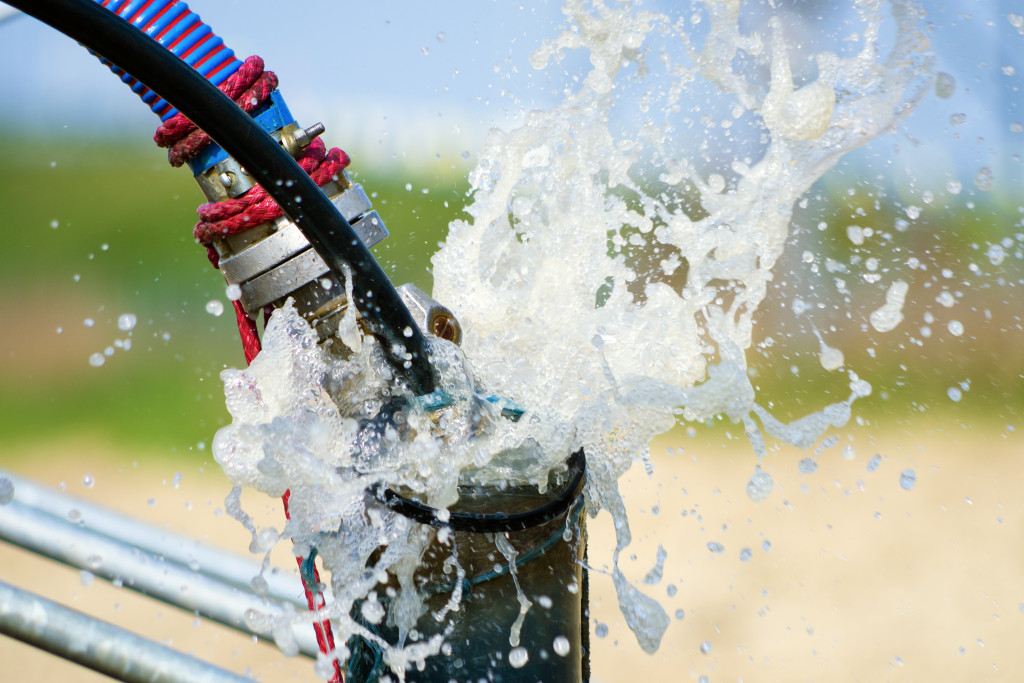As the world population grows, domestic water usage also increases. Many parts of the world are currently facing a water crisis. Population growth and climate change contribute to this problem.
While experts are still finding new ways to mitigate the effects of this crisis, most of the world still utilizes tried-and-tested methods to provide clean water. One of the earliest forms of water treatment is distillation and desalination. This is the process of converting seawater into drinkable water. In desalination plants, water is passed through membrane filters at high pressure. This process separates the salt and minerals from the water. The clean water is then supplied to a storage facility for further treatment. Often, these technologies might not be enough.
It is part of the UN Sustainable Development Goals to achieve universal access to clean water. The world is far from achieving that goal. Everyone needs to contribute to the collective effort to end water shortage. Residential use comprises a small percentage of water consumption. Agricultural and industrial processes consume the most. But this doesn’t mean you should not be concerned.

You Can Save Water at Home Too
You can contribute to water conservation by using water-saving tools and equipment at home. Teach your children to use a cup when brushing their teeth. Invest in a rainwater catchment system to harvest rainwater you can use for your gray water needs. Install a water buffer tank to ensure you have cold or hot water at all times without exhausting your water system and stays in optimal efficiency.
Furthermore, you can compute your total water use at home to know how much you consume. Check pipes for leaks. You might be spending on the water you are not even consuming. These are just some ways you can practice water conservation at home.
Water-Saving Technology
Outside residential homes are massive efforts to have access to clean water. Here are some technologies that help that cause:
1. The LifeStraw
The LifeStraw is a portable drinking straw. It filters dirty water to make it suitable for drinking. It can filter a minimum of 1,000 liters, which is helpful as an average person needs around 20 to 50 liters per day for drinking, bathing, and cooking. The LifeStraw, on the minimum, can filter water enough for 20 to 50 days.
This portable straw uses membrane microfilters that have microscopic pores to clean dirty water. They use the same technology as the one used in kidney dialysis.
Water passes through these microscopic pores that block bacteria, parasites, microplastic, and dirt. Silt and sand that cause cloudiness in dirty water cannot pass through the pores because they are too small. They use other technologies such as activated carbon filtration and ultrafiltration. All these technologies in a tiny straw result in clean drinking water.
2. The Drinkable Book
This technology has a fascinating name and use. You can’t exactly drink the book, but it is a tool for people to access clean water. The actual pages of the book contain information on water hygiene and sanitation. What makes it more interesting is the fact that the pages are made of filter paper. This combines education and practice in one.
The filter paper pages are used to purify unclean water, as the pages are coated with silver nanoparticles. These nanoparticles are responsible for the filtering effect. Some people report that they trap 99.9 percent of bacteria from cholera, E. coli, and typhoid. Each book has enough pages to clean water for up to four years.
The creators are now in the process of publishing the book in different languages. This supports their aim to educate the world and give access to clean, drinkable water. People from Ghana, Kenya, Ethiopia, and Haiti are who benefited from The Drinkable Book.
3. The Nano Bucket System
The Nano Bucket System can give families an unlimited supply of safe water for years. It uses Nanotube technology for its filtering system.
One end of each filter has bundles of Nanotube looped and sealed. The filter, housed in a bucket, is connected to a tube that is one meter long. The unclean water passes through the tube before reaching the filter. Tiny pores block bacteria and other contaminants resulting in clean water at the other end of the filter.
It takes one minute to get 1 liter of clean water. To clean it for the next use, you only need to backflush the filter with clean water. A similar filtration system is the ceramic bucket system. It has three stages: ceramic filtration, sterilization, and activated carbon filtration.
Science and technology have long enabled solutions to the water shortage problem. From old processes like desalination to modern solutions, the fight continues. You can do your share by educating people about the water crisis. In developed countries where water supply is not a problem, it is easy to forget that other parts of the world are suffering.
You might not be able to develop a technology to solve the water crisis. However, small practices and efforts at home help a lot.




